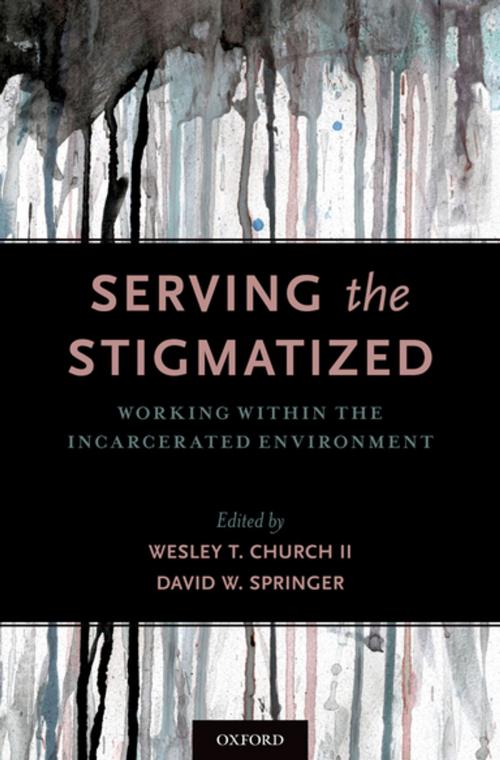Serving the Stigmatized
Working within the Incarcerated Environment
Nonfiction, Social & Cultural Studies, Social Science, Social Work, Crimes & Criminals, Criminology| Author: | ISBN: | 9780190678777 | |
| Publisher: | Oxford University Press | Publication: | June 26, 2018 |
| Imprint: | Oxford University Press | Language: | English |
| Author: | |
| ISBN: | 9780190678777 |
| Publisher: | Oxford University Press |
| Publication: | June 26, 2018 |
| Imprint: | Oxford University Press |
| Language: | English |
America's incarceration rate was roughly constant from 1925 to 1973, with an average of 110 people behind bars for every 100,000 residents. By 2013, however, the rate of incarceration in state and federal prisons had increased sevenfold to 716. Compared with 102 for Canada, 132 for England and Wales, 85 for France, and a paltry 48 in Japan, the United States is the worlds' most aggressive jailer. When one factors in those on parole or probation, the American correctional system is in control of more than 7.3 million Americans, or one in every 31 U.S. adults. This means that 6.7 million adult men and women -- about 3.1 percent of the total U.S. adult population -- are now very non-voluntary members of America's "correctional community." Some key questions that need to be addressed are: "What are we doing with those 7.3 million Americans? How are they being treated while they are incarcerated? How can we best prepare them to return to their communities?" More than 650,000 offenders are released back into our communities every year; however, 70% are rearrested within three years of their release. Serving the Stigmatized is the first book of its kind that explores best practices when dealing with a specific prison population while under some form of institutional control. If the established goal of a correctional facility is to "rehabilitate," then it is imperative that the rehabilitation is effective and does not simply serve as a political buzz word. The timing of releasing this book coincides with a real movement in the United States, supported by both conservative and liberal advocates and foundations, to decrease the size of the prison population by returning more offenders to their communities. The text examines 14 specific populations and how to effectively treat them in order to better serve them and our communities.
America's incarceration rate was roughly constant from 1925 to 1973, with an average of 110 people behind bars for every 100,000 residents. By 2013, however, the rate of incarceration in state and federal prisons had increased sevenfold to 716. Compared with 102 for Canada, 132 for England and Wales, 85 for France, and a paltry 48 in Japan, the United States is the worlds' most aggressive jailer. When one factors in those on parole or probation, the American correctional system is in control of more than 7.3 million Americans, or one in every 31 U.S. adults. This means that 6.7 million adult men and women -- about 3.1 percent of the total U.S. adult population -- are now very non-voluntary members of America's "correctional community." Some key questions that need to be addressed are: "What are we doing with those 7.3 million Americans? How are they being treated while they are incarcerated? How can we best prepare them to return to their communities?" More than 650,000 offenders are released back into our communities every year; however, 70% are rearrested within three years of their release. Serving the Stigmatized is the first book of its kind that explores best practices when dealing with a specific prison population while under some form of institutional control. If the established goal of a correctional facility is to "rehabilitate," then it is imperative that the rehabilitation is effective and does not simply serve as a political buzz word. The timing of releasing this book coincides with a real movement in the United States, supported by both conservative and liberal advocates and foundations, to decrease the size of the prison population by returning more offenders to their communities. The text examines 14 specific populations and how to effectively treat them in order to better serve them and our communities.















